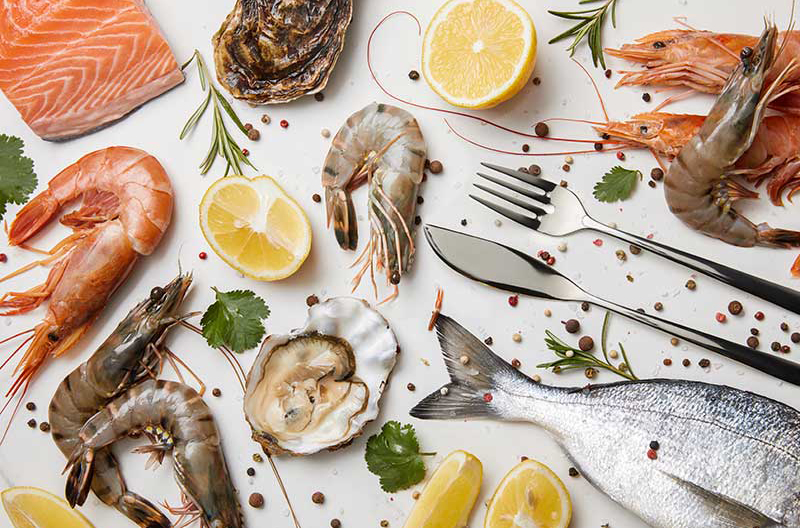To document the ever-changing nature of the marketplace, IRI, 210 Analytics and Elanco have continued to team up to bring the latest trends and analysis relative to seafood sales at retail, including fresh, frozen and shelf-stable.
The inflation in seafood was mostly in line with total food and beverages. Fresh seafood prices per-unit were up an average of 11.6 percent in May, which was down slightly from the inflation rate for seafood seen in April 2022, which was 13.5 percent. The average price for finfish jumped to nearly $10 per unit, up 20.2 percent versus May 2021.
Frozen seafood dollar sales were higher than fresh seafood in May, at $643 million versus $618 million, respectively. This was due to a 13.2 percent decline for fresh seafood when comparing May dollar sales to year ago levels. Frozen seafood dollars declined as well, but at a slower rate of 5.6 percent. Only shelf-stable seafood (canned and pouches) increased, at 7.8 percent, along with an increase in volume sales.
During the five May 2022 weeks, ambient seafood in cans and pouches reached $251 million in sales, which was a 7.8 percent year-on-year increase. The down performance in units but the increase in volume may indicate a shift to larger package sizes. The vast majority of sales were generated by tuna.
During the five May weeks, dollar sales for fresh seafood reached $618 million. Year-on-year, fresh seafood sales declined 13.2 percent, more than the deceleration of 11.8 percent seen the prior month. While dollar sales remained above 2019 pre-pandemic levels, volume is now trailing the 2019 levels by 3.2 percent.
Each of the five May weeks generated between $114 and $136 million. While meat sales were higher during the Memorial Day holiday week, the final week of May did not bring a bump for fresh seafood – indicating that it still has an opportunity to better integrate in Americans’ grilling traditions that are very meat-centric. Grill-ready shrimp or salmon kabobs or teaching consumers how to grill fish may be ways to do just that.
Assortment and inventory seemed to be one of the culprits of the recent declines in sales. Departments across the store are dealing with out-of-stocks and SKU reduction amid supply chain disruption and constraints. In fresh seafood, shellfish assortment was down 4.6 percent for fresh finfish and 8.7 percent for fresh shellfish. This means a smaller number of items need to work harder to achieve the same level of sales. The total fresh seafood number was down 3.4 percent, as retailers added more other items, such as seafood salad.
Fresh salmon and seafood salads were the lone segments that managed to increase year-on-year growth on the dollar side. However, in volume, all top 10 segments in dollar sales sold fewer pounds than they did one year ago. Salmon and smoked salmon lost ground in single digits, whereas crab and tilapia were down more than 30 percent versus year ago levels.
Building onto several years of growth, frozen food sales continued to increase in May 2022. Dollar sales gained 6.1 percent over year ago. However, like most other areas of the store, frozen food sales could not match prior year unit levels, which were down 7.1 percent. Frozen meals and frozen animal protein were the largest areas within the frozen department. Both were big contributors to the department’s dollar gains. While frozen seafood remained the biggest seller within animal protein, its dollar sales were down 5.6 percent whereas all other areas grew.
By type, frozen fish was the largest subcategory in April 2022, at $566 million. While volume was down year-on-year, the declines were far less pronounced than those in fresh seafood.
For more information, visit iriworldwide.com.
For more seafood news from The Shelby Report, click here.

